Sailfin Tang
Amid its various qualities, the personality and beauty of the Sailfin Tang make it an excellent addition to a marine aquarium.
Like the septet of the sailfin tang breeds, when the fins of the Sailfin Tang are fully expanded, its height is around the same as its length, granting it a disk-shaped form.
- Experience Level: Intermediate
- Hardiness: Delicate. High demand for plant based foods
- Minimum Tank Size: 75 gal (284 L)
- Size of fish: 15.7 inches (40 cm)
- Temperament: Passive/Mild
- Temperature: 74.0 to 82.0° F (23 to 28° C)
- pH Range: 8.1 to 8.4
- Diet: Herbivore
Table of Contents
Introduction
Aquarium Setup
Difficulty
Feeding
Breeding
Social
Although they look extremely similar to its close relation the Desjardin’s Sailfin Tang Z. desjardinii, it is less expensive and more common. These two are indistinguishable when they are juveniles. However, as adults, the Pacific Sailfin Tang keeps its charming juvenile looks, though seemly less yellow, whereas the Desjardin’s Sailfin Tangwill will alter its stripes for spots and brightens in color. They will both get fairly big, and in actual fact, they are the biggest of the Zebrasoma species.
The Pacific Sailfin Tang is fairly placid and will harmonize with various tank mates in a big public aquarium, but should be placed in the tank last. House it singly, as it does not blend with others of its equal genus. Brave in nature, it will rapidly adapt to aquarium life, and is easy to nurture once it is settled. As one of the most hardy of the surgeonfish, it is extremely resistant to disease, and answers well to treatment.
There are a few things that the Zebrasoma breeds have in that are prevalent with all the tangs and surgeonfish. They enjoy lots of water motion in order to supply an oxygen rich setting, instead of serene. They are agile and fast swimmers, and as such, will require plenty of swimming room, coupled with lots of crevices amid rocks and corals to withdraw into and for sleeping at night time. Being greedy algae eaters, an aquarium with ample algae growth will cater for their nutritional needs, as well as shaping them into outstanding nominees for a reef aquarium.
The Incredible Zebrasoma-Veliferum – Sailfin Tang
Aquarium Setup
All Tangs and Surgeonfish are fast and nimble swimmers and require plenty of open space. To feel safe, they also require corals and rocks with plenty nooks and crannies to hide in and to squeeze themselves into at night time for napping. This fish will not trouble inverts or corals, but it will nibble on algae, so it is extremely practical in a reef setting. But, keep corals fastened down, as their rapid speeds may collapse a coral or two. They flourish in tanks with ample algae growth.
Tangs and Surgeonfish are constant eaters, and they require a proper diet. They are susceptible to nutritive ailments which c cause LLD (lateral line disease) and color loss. Complementing their diet with a vitamin supplement added directly to their water, or the addition of vitamin C to their food, can assist in avoiding, or aid in lessening these ailments. They are also susceptible to viruses’ resultant of organic build-up, which degenerates water quality. Therefore, they require regular small water changes, vigorous filtration and protein skimming, and small, but regular, water changes.
A few of the Acanthuridae members are extremely attractive, active and colorful to aquarists. However, they do not generate as much skin mucus on their bodies as other fish, and can be susceptible to diseases such as Marine Velvet and Marine Ich. Surgeonfish are certainly a candidate for segregation when you first acquire them. They can be cured successfully with copper drugs or medical care, but as they have a crucial microfauna in their digestive system, continuous or prolonged use of a copper treatment is not recommended.
In the wild a purer wrasse (Labroides sp.) will aid them by procuring parasites from their bodies, but these wrasses are extremely hard to maintain in captivity. Alternate fish such as Neon Gobies (Gobiosoma spp.) or purer shrimp can aid them by suppling this cleansing service in the home aquarium.
Sailfin Tang Aquarium Guide
- Minimum Tank Size: 75 gal (284 L)
- Suitable for Nano Tank: No – never
- Live Rock Requirement: Beneficial, as it aids in food growth
- Substrate Type: Any
- Lighting Needs: Any – They have no special lighting requirements though if kept with a host, the anemone will need its appropriate lighting.
- Temperature: 74.0 to 82.0° F (23 to 28° C)
- Specific gravity: 1.020-1.025 SG – Red Sea Specimens 1.025-1.027 SG
- pH Range: 8.1 -8.4
- Water Movement: Prefers good flow- Provide areas in the tank with calmer waters for feeding.
- Water Region: All, the Sailfin Tang will frequent all areas of your aquarium
Difficulty
The Sailfin Tang is relitively easy to keep, and an excellent addition to the marine aquarium. It can deal with a broad range of water characteristics, however it will thrive in a habitat that provides coherence, not only in water quality and conditions, but also in tank mates and decor. It can be kept in a reef environment or a fish only tank as it will not hurt invertebrates or corals. It is extremely resistant to disease, and reacts well to treatment when sick.
There are a few Acanthuridae members that are sensitive and will need more definite care, but most will react well if you apply a few technical allowances. All Surgeonfish require an aquarium with an abundance of aeration, as a sound current will aid in providing ample oxygenation. Make sure to supply plenty of room, particularly for mature specimens, coupled with plenty of corals and rocks with crevices for withdrawing into and for sleeping. These adornments will also bestow itself to algae growth, that Surgeonfish enjoy feeding on, making them a priceless addition to a reef setting.
Feeding
The Sailfin Tangs are mainly herbivores. In the wild they usually feed on leafy macroalgae algae. This genus can house fat in their body cavities, so are known to go through stages of non-feeding.
In the aquarium, Most of their diet will be vegetable matter, but they do require meaty foods as well if there is not enough detritus in the tank. Make sure to provide plenty of prepared frozen formulas containing algae or spirulina, marine algae, frozen mysid shrimp and brine and flake foods. Japanese Nori or other seaweed can be affixed to the aquarium walls with a vegetable clip. Be sure to feed 3 times a day in lesser amounts, rather than a large amount once a day. As constant grazers, they will gain from this and it will also maintain the water quality over a prolonged period of time.
Delivering a vitamin supplement (including vitamin C) can help their nutritional requirements, and vitamin C can aid reducing or preventing Lateral Line Erosion (LLE). This can be achieved by adding vitamins to the food, drenching dried pellets with liquid vitamins, or by adding a liquid vitamin inside the water. It is also noted that pellets dipped in garlic may aid in fending off Marine Ich. A few hobbyists also record success with supplemental foods such as broccoli, leaf lettuce or spinach, previously boiled or frozen zucchini.
Sailfin Tang Feeding Guide
- Diet: Herbivore – Use products with Spirulina added if there is not enough algae in the tank.
- Flake Food: Yes
- Pellet / Tablet: Yes
- Live foods (fish, shrimp, worms): While not necessary they can be beneficial to condition them for spawning and when there is not enough detritus in the aquarium.
- Vegetable Food: 95% of their diet
- Meaty Food: 5% of their diet
- Feeding Frequency: Feed adults twice a day and juveniles 3 to 4 times a day.
Breeding
For a majority of the Zebrasoma breed, there is no sexual contrasts recorded, but for this breed, the males usually grow bigger than the females. A few breeds of surgeonfish have been bred in community aquariums and there have been a few disjointed reports of breeding in community aquariums, but normal rearing and breeding of the young has not been reported yet. Although the Sailfin Tang has not been bred in captivity as yet, this breed has been seen breeding in pairs in the ocean.


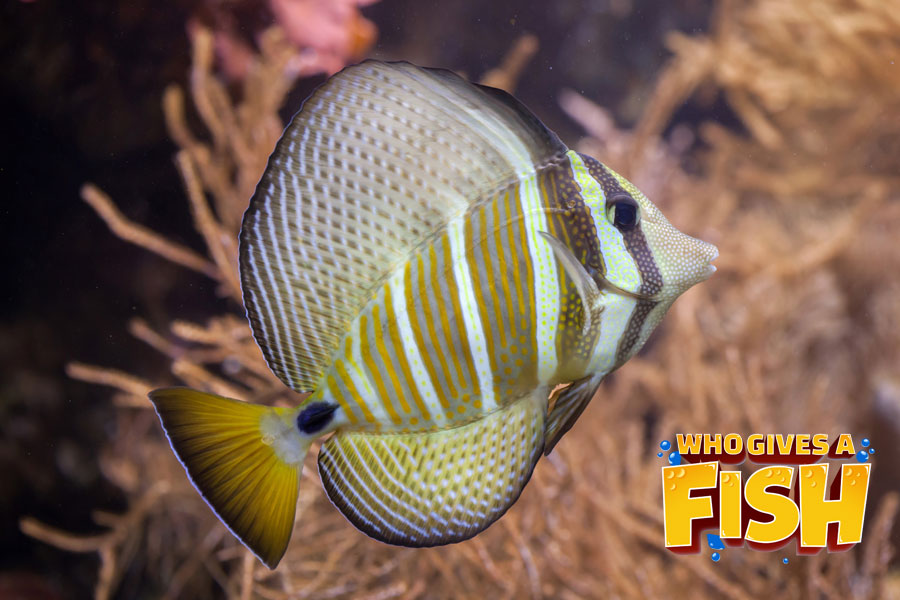
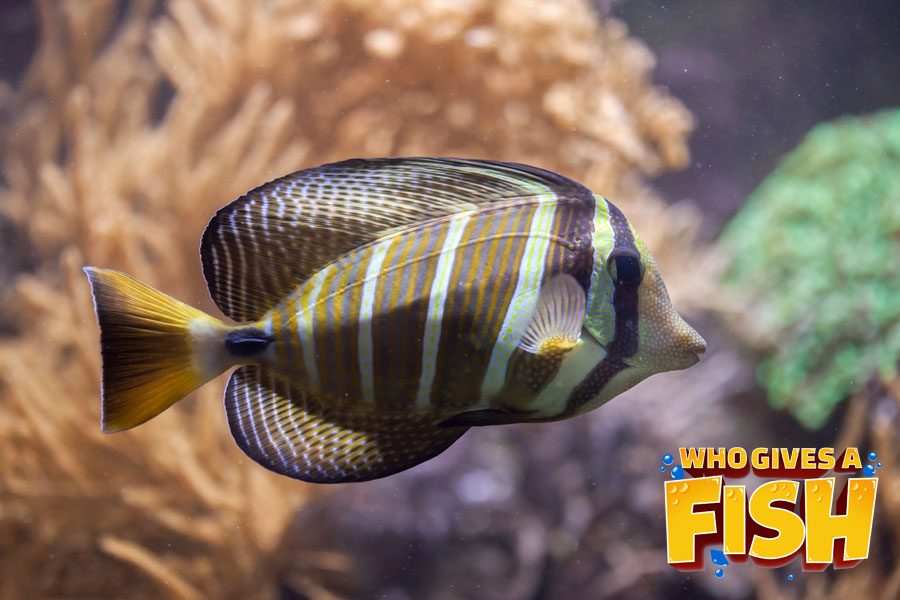
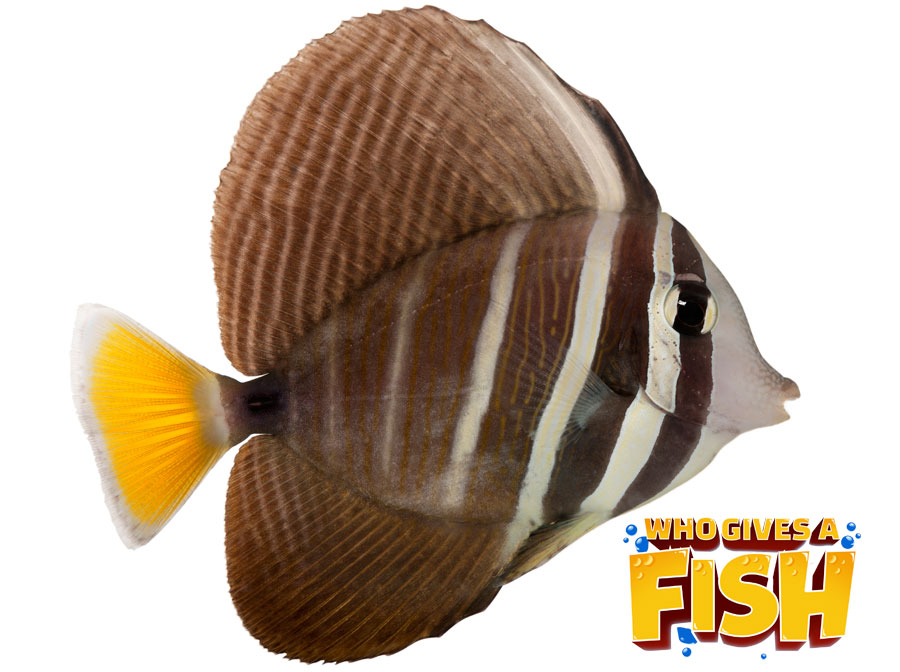
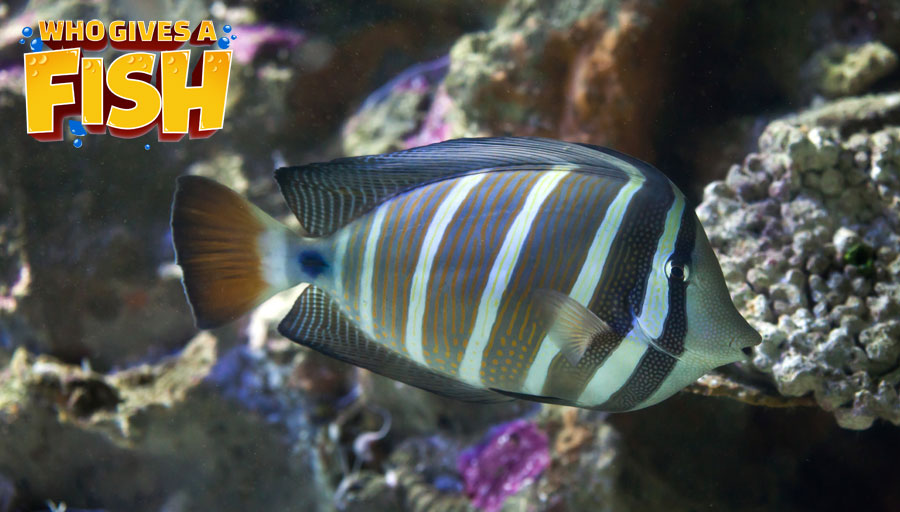
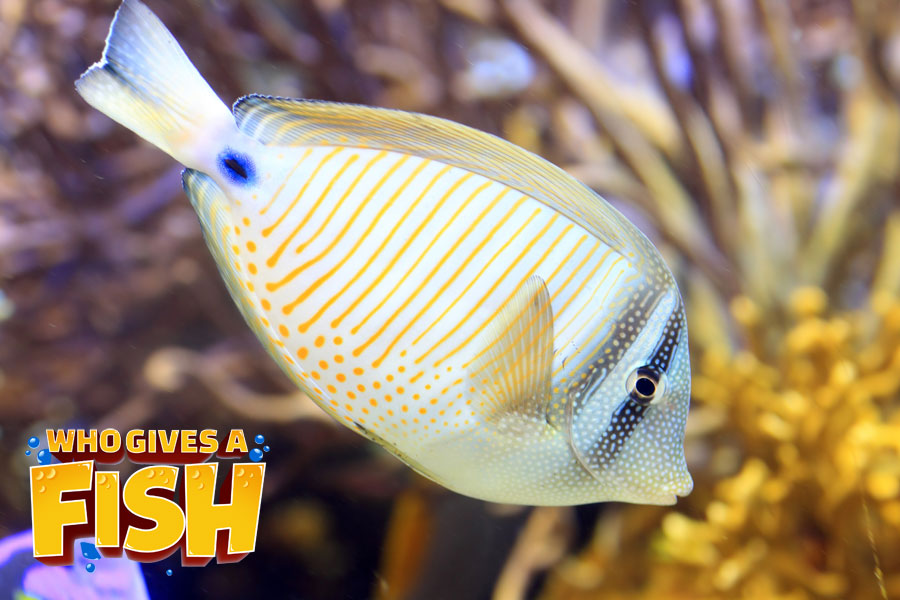
Social
Their gentle nature see them sharing a reef habitat with corals and inverts, where they will feed on the algae. They can also be housed in a fish only public tank with placid tank mates. This fish has a gentle temper and harmonizes with most fish, apart from others of their own genus.
Tangs and Surgeonfish are known to be territorial, at times just with their own kind and at times with other breeds. Inserting a new surgeonfish into an aquarium that already keeps one or more is generally an issue. It is best to primarily prevent several species together, instead of adding a new one at a later date. Although a big aquarium can aid in easing a few problems, be mindful of the social behaviors of any breeds you are thinking of in order to prevent compatibility problems.
You may successfully couple this tang with various genus’, so long as there are no resemblances. An example of lending genus in a big tank without event would be to keep a Hippo Tang, Naso Tang and a Yellow Tang. Placing them together first works best. When adding a new member to an already established batch, altering the rock work will sometimes relieve any hostility towards the new addition. A little pursuing will take place, but generally nothing harmful.
Back to top